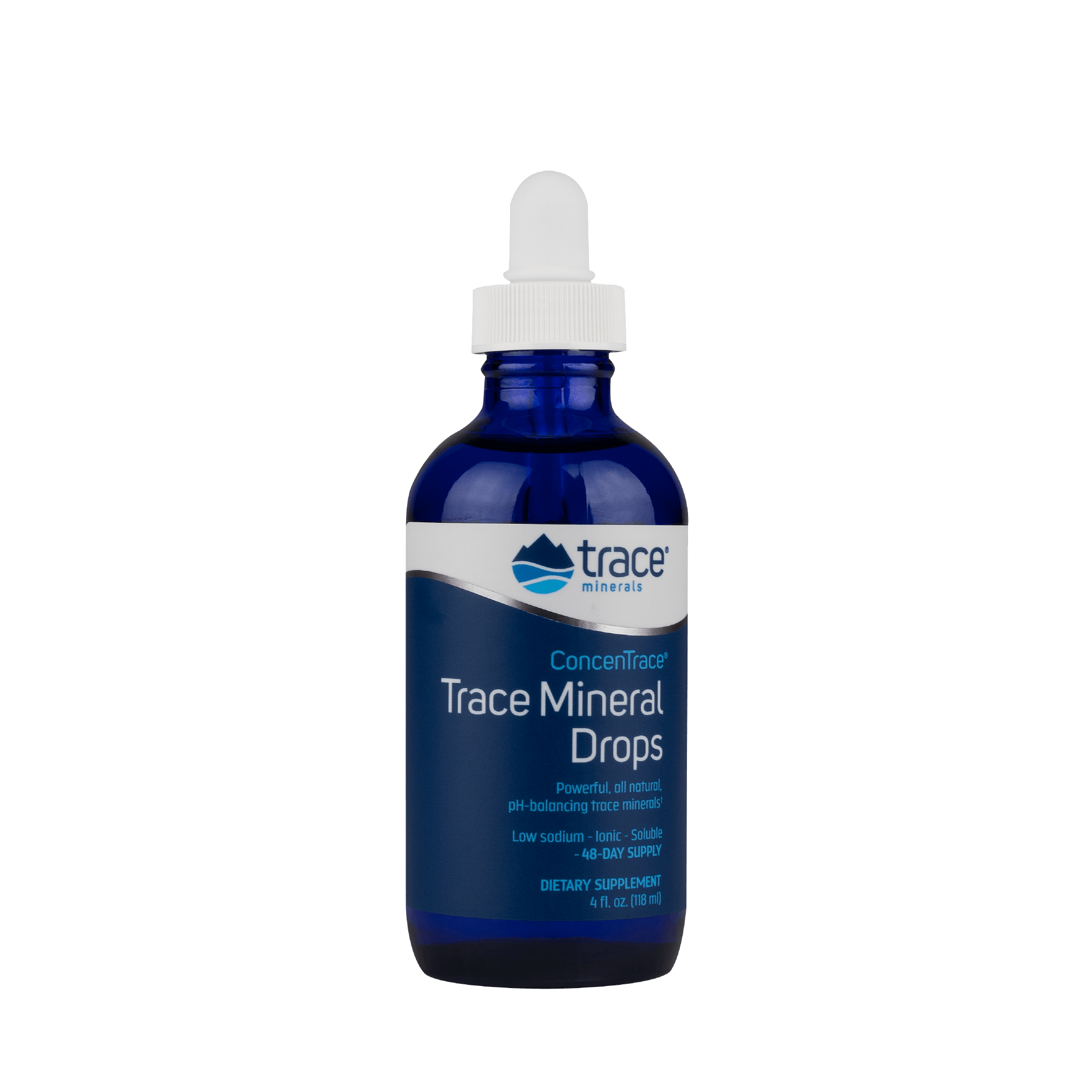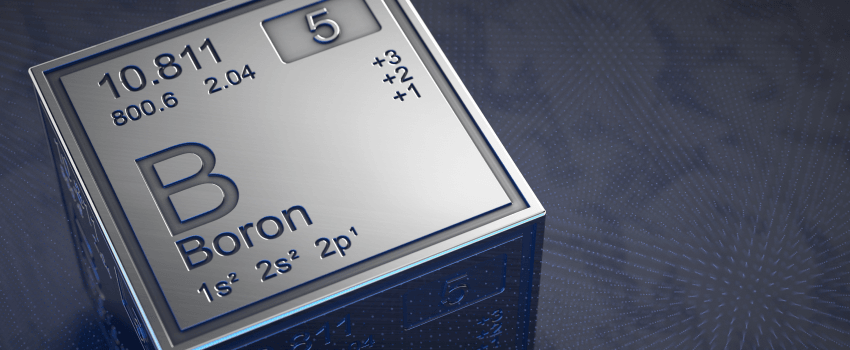by Alexander G. Schauss, Ph.D.
Introduction
There are 92 elements found in nature, and an additional 22 theoretical and/or observed elements. In addition, there are hundreds of isotopes of the elements, any one of which may play an as yet undiscovered role in human health. In table 1 below are listed the quantities of elements found in the earth’s crust, oceans, and atmosphere. These are the elements our body must draw upon to survive. It becomes increasingly evident when studying the relationship of minerals to human health that keeping the level of minerals in balance in every tissue, fluid, cell and organ, in the human body may be the key to maintaining human health.

Through geophysical forces, mixing of the earth’s crust with water can provide virtually every mineral our body requires to maintain health. This explains why the noted nutritionists, Ruth L. Pike and Myrtle L. Brown stated in Nutrition: An Integrated Approach (John Wiley &Sons), 1984, p.197) that: “Water is compatible with more substances than any known solvent, and therefore it is an ideal medium for transporting nutrients in the cells and for the chemical reactions of cellular metabolism to take place.”
Table 2 below lists 66 elements that have been identified to date in sea water. A few surviving inland seas such as the Great Salt Lake of Utah have concentrated many of the same minerals found in the sea through geothermal and evaporative processes. These natural sources of the elements can provide a rich source of minerals compatible to human physiological needs.

These are average concentrations. Variations will exist depending on the collection site of the sample.Ref. Handbook of Chemistry and Physics, 65th Ed. 1984-1985, CRC Press, Boca Raton, Fl., p. F-149It is interesting to note that the famous environmentalist, Racheal Carson, recognized the importance of protecting the ocean and these delicate inland seas. In the Sea Around Us, she wrote:
“. . .Fish, amphibian, and reptile, warm-blooded bird and mammal – each of us carries in our veins a salty stream in which the elements are combined in almost the same proportions as in sea water. This is our inheritance from the day, untold millions of years ago, when a remote ancestor, having progressed from the one-celled to the many celled stage, first developed a circulatory system in which the fluid was merely the water of the sea. In the same way, our lime-hardened skeletons are a heritage from the calcium-rich ocean of Cambrian time. Even the protoplasm that streams within each cell of our bodies has the chemical structure impressed upon living matter when the first simple creatures were brought forth in the ancient sea. . .”
Minerals and Human Health
In almost every chemistry textbook one can find a copy of the “Periodic Table of the Elements.” This table shows each known element’s particular physical characteristics. Scientific study of these elements has discovered that many of them are absolutely essential to life on this planet.
A number of factors have been associated with the occurrence of a deficiency of a mineral in humans: deficiency in the soil; water and plants; mineral imbalances; processing of water or soil; and, inadequate dietary intake.
There is a significant body of evidence that minerals by themselves and in proper balance to one another have important biochemical and nutritional functions.
To understand the concept of “biochemical individuality” we have to get away from the mistaken assumption that every person utilizes and absorbs minerals the same way. The absorption of minerals is dependent on so many different factors, not the least of which is age, adequacy of stomach acid output, balanced bowel flora, lack of intestinal illnesses and parasites, and dietary fiber intake.
“Whatever the nutritional potential of a food, its contribution is nonexistent if it does not pass the test of absorption. Those nutrients that have not been transferred through the intestinal mucosal cell to enter the circulation have, for all nutritional intent and purpose, have never been eaten. The variety of nutrients from the organism’s environment that have been made available by absorption must be transported through the circulatory system to the aqueous microenvironment of the cells. There, they serve their ultimate purpose: participation in the metabolic activities in the cells on which the life of the total organism depends.”
Ruth L. Pike and Myrtle L. Brown
Nutrition: An Integrated Approach
John Wiley & Sons, 1984 l, p. 283
Listed below in table 3 are eight minerals that should be ionic in order to be readily absorbed into the body through transfer in the small intestine (intraluminal absorption). These minerals become ionic after their food-bound forms, whether organically or inorganically bound, have been exposed to hydrochloric acid in the stomach. Hydrochloric acid helps liberate these minerals into ionic (charged) minerals.
Ageing increases the risk of gastric atrophy, a condition that commonly is associated with a decreased secretion of hydrochloric acid in the stomach. As the level of hydrochloric acid output decreases, the body’s ability to absorb these minerals from their food-bound form diminishes. This inability to adequately absorb these minerals may be one of the causes of age associated degeneration. It is for this reason that careful attention must be given to the form a mineral takes, since the less dependent it is on hydrochloric acid to be absorbed, the more likely it will be able to be utilized by the body.
As will be discussed later, three of the minerals listed in table 3 can be intraluminally absorbed in some complex forms without first becoming charged ions . However, all eight of these minerals are best absorbed when they are in their ionic form. The important point is that gastric atrophy or conditions such as achlorhydria (lack of stomach acid) or hypochlorhydria (inadequate stomach acid) can impair the body’s absorption of important minerals. Achlorhydria has been found in children as young as five or six years of age. Hypochlorhydria, however, is more commonly seen after age 35. It is estimated that between 15 and 35 percent of adults age 60 have some degree of gastric atrophy, including hypochlorhydria. Finding a source of minerals in ionic form would clearly be of benefit to such individuals.

One of the minerals listed in table 3 is zinc, a mineral found in every fluid, tissue, cell, and organ, in the human body. Inadequate intake of this essential mineral can effect any of over 200 enzymes in the body, such as the enzyme, alkaline phosphatase. In patients with either bulimia nervosa (binge-purging behavior) or anorexia nervosa (self-induced starvation), zinc deficiency can directly affect cognitive and perceptual processes that help maintain these insidious eating disorders. Recently it has been shown that there is an inverse relationship between morbid obesity and zinc, meaning that the more morbidly obese the individual the lower their zinc status. This suggests that zinc plays an important role in the entire continuum of eating disorders, from obesity to anorexia nervosa. A similar example would be the mineral magnesium which plays a role in over 300 enzyme reactions in the body, many of which are directly related to cardiovascular health.
Non-Essential (Toxic) Elements
Excessive levels of non-essential toxic elements, such as lead, cadmium, mercury, and aluminum, can have an “unbalancing” effect on trace element balances in the body’s cells, as can be seen in the table 4 below.
Cadmium, an air pollutant from cigarette smoke, industrialization, and population growth, is known to experimentally cause hypertension, abnormal cell growth, and immune disorders. Cadmium acts like a classical stress agent. It has also been implicated in learning disabilities. Unlike lead which has a short half-life in human tissue from 30 to 100 days, cadmium has a half-life of between 10-30 years. While it is known that free cadmium is very toxic, it has also been found to greatly increase the toxicity of other agents. Cadmium has a unique capacity to form a very close bond with chloride compounds, such as the chlorinated pesticide lindane. When the two are combined, the tissue levels of lindane doubles by altering liver metabolism. Cadmium accumulates in the most malignant cells; in prostate abnormalities there is a linear correlation between the grade of malignancy and cadmium content. On the positive side, little cadmium is absorbed orally unless there are nutrient deficiencies. Which nutrients protect against cadmium and other non-essential elements is found listed in table 5

Besides all of these more obvious issues are two important factors: 1) diseases and 2) drug-nutrient interactions. Physical illness can raise demands for many trace elements. The demand for some minerals, such as zinc, even increases under psychological stress. Drug-nutrient interactions can also create deficiencies and imbalances of minerals at the cell level. For example, the absorption of iron from the gut can be affected by antacids and tetracycline. Magnesium and zinc are hyperexcreted by those receiving oral diuretics, nephrotoxic drugs, penicillamine, and antacids containing aluminum hydroxide.
Recent research indicates that minerals may play a significant role against a variety of degenerative diseases and processes. They may also prevent and reduce injury from environmental pollutants and enhance the ability to work and learn. They can also protect the body from the effects of toxic minerals, as can be seen by the table 5 above.
New studies suggest that numerous minerals, when in proper balance with one another, may be performing important non-classical biochemical functions especially important to age-related health problems. Examples will be illustrated in the second chapter.
Given this body of new data, we should begin to view our daily intake of nutrients as performing dual roles; first in the role of preventing known mineral deficiencies; and, second in optimizing the disease-preventing properties of these nutrients. The latter role, and the increasing evidence that supports it, makes it reasonable to believe that it will be possible to reduce the incidence of most life-limiting chronic diseases through the adoption of optimal daily nutrient intake levels. The key is insuring that the body always receives an adequate and balanced supply of all minerals (elements) that might be of potential benefit to maintaining our health or restoring our health.
One can summarize the health benefits of some trace elements in table 6 below. These minerals can be of benefit as described in table 6 if they are in balance with other elements they interact with.

Establishing optimal nutrient levels as an additional yardstick in assessing nutrient intake has important implications. Recent analyses of data of nutrient and supplement intake in the United States conducted by the U.S. National Institutes of Health and other government agencies indicate that the vast majority of people in both affluent and emerging industrialized countries do not reach even 50% of the minimal Recommended Dietary Allowances (RDA) for nutrients. This finding may be seen by some as discouraging, especially if evidence continues to support the view that nutrient levels above the RDA perform a role in the prevention of chronic diseases.
It is also valuable to know that the realization of the importance of trace elements to human health is of recent origin. For example, only fifteen years ago every textbook taught that the trace element boron was non-essential to all mammals, including man. However, today it is believed to be so important to human health that numerous scientists are preparing to petition the governments to urge them to recognize boron as a trace element essential to human health. (See discussion of boron.)
Equally important is the ratio of trace elements. For example, if you compare the levels of minerals in human’s and cow’s milk, you will see significant differences between the two. In fact, the ration of mother’s milk is different for every animal, suggesting the importance nature has placed on the differential physiological needs of each animal on this planet.

The concentration differences seen in tables 7 and 8 within species and between species emphasizes the importance of needing to recognize biochemical individuality. Numerous factors contribute to determining the optimal minerals intake for each individual.
Inorganic vs. Organic Minerals
From time to time some supplement companies claim that their mineral supplements are superior to others because their products contain “organically-bound minerals” versus inorganic minerals. Such claims can create confusion in the minds of some consumers and are worth discussing.
In the field of plant physiology it is a well known fact that minerals enter the plant roots in ionic form. When the mineral attempts to enter the exterior of the root in a non-ionic complex form (i.e. organic), the complex is first broken down in the exterior of the root into an ionic form before it passes through a selective barrier known structurally as the xylem. From there the mineral is carried upward in its ionic state across critical membranes until the mineral is delivered to those leaves and other plant parts requiring them. This is essential to any plants ability to survive and grow normally.
What is an ion?
An ion is a particle (either an atom or a group of atoms) that carries an electrical charge. There are two types of ions : positively charged ions called cations, and negatively charged ions called anions. Examples of important cations in the body include magnesium, sodium, potassium, calcium, and hydrogen. Important anions are bicarbonate, chloride, and phosphate.
Then what is an electrolyte?
Substances that form ions are called electrolytes . Calcium, magnesium, chloride, bicarbonates, potassium, sodium, and hydrogen are all examples of electrolytes .
What functions do electrolytes perform in the body?

From the examples above, it is clear that maintaining a balance of cations and anions in the body is essential to our health. For example, the acidity of the blood is dependent on the level of hydrogen cations. To prevent the blood from becoming too acidic, hydrogen cations are neutralized by bicarbonate anions. Should the fluid state within any cell become too acidic, phosphate anions inside the cells will “neutralize” the cations to restore balance. In this way you can see how a natural inorganic magnesium source, such as magnesium chloride, can provide both a cation and an anion vital to maintaining the electrical balance in the fluid and the cells of the body.
For the body to function normally, the level of each ion must be kept in balance within a very narrow range; any significant deviation can result in symptoms.
Many trace elements are better absorbed in humans and animals if they are in ionic form (see table 3 above for listing of these elements). Magnesium, for example, from a variety of more expensive organic salts (acetate, citrate, lactate) and less expensive organic salts (carbonate, chloride, oxide, phosphate and sulfate) have been shown to be equally absorbed from green leafy vegetables (“organic” magnesium) is equivalent to the absorption of magnesium from magnesium chloride (“inorganic magnesium”). These finds, and many others, question the assumption that “organic” minerals are somehow superior to “inorganic” minerals.
There have been many studies on mineral absorption in humans. Professors Rosenberg and Solomons of the Massachusetts Institute of Technology (MIT) state that:
“Insofar as minerals in the diet are often bound to proteins, complexed with organic molecules in food, or otherwise imbedded in the matrix of food-stuffs, the mechanical processes of mastication, dissolution, dispersion, and often digestion are important preparative steps to absorption. Moreover, at the conclusion of the aforementioned reductive processes, minerals generally emerge in the intestinal lumen as charged ions , e.g. Fe**, PO4–, SeO3–.”
Rosenberg, I.H., Solomons, N.W. In: Absorption and Malabsorption of Mineral Nutrients. Alan R. Liss, 1984, p. 2.
In other words, the form of the mineral in foodstuffs or a dietary supplement is not quite as important as making sure it is in an ionic form at the point of intraluminal absorption. The dominant factor is that the mineral must be freed from whatever matrix it is contained in until it is in such an ionic form that it can be taken up in the intestine. Rosenberg and Solomons state that in order for most minerals to be absorbed it is essential to acidify the stomach contents to liberate the minerals from their food matrices. (ibid, p.5) They also point out that excessive alkalinization later on in the small intestinal contents can reduce the solubility of certain minerals in the gut, thereby reducing absorption of those minerals. So no matter if the mineral is organically bound or not, other factors must be considered.
That is not to say that there aren’t some minerals such as iron or cobalt that are absorbed from foods such as components of complex organic entities (heme porphyrin, coalamin) at the point of absorption. The primary source of these minerals come from food. Iron in the form of hemoglobin and myoglobin in red meats is more bioavailable than inorganic iron. (In the case of iron, an excessive intake of dietary iron can lead to ill-health, especially in individuals with iron storage disorders.)
Trace Element Interactions and Balance
The importance of maintaining optimal ratios of nutrients is important in the prevention, mitigation and treatment of numerous diseases. For example, in a recent review on the role of trace elements and hypertension (high blood pressure) the authors came to the conclusions that:
“Clearly, nutrients function interactively both in the body and in their impact on blood pressure regulation. Whenever the consumption of a single nutrient is significantly altered, an entirely new dietary pattern is created. Nutrients occur in clusters in the diet and may therefore act synergistically to alter physiologic variables such as blood pressure.”
Ref: Reusser, M.E., McCarron, D.A., Nutr Rev., 1994: 52; 367-375.
Simply stated, trace elements must exist in relative balance in the fluids, cells, organs, and tissues of the body to contribute to human health.
Summary
Trace minerals do not exist by themselves but in relationship to one another. Too much of one trace element can lead to imbalances in others resulting in disease, rather than the absence of disease. Most trace elements need to be in ionic form to be well-absorbed in the intestine. Other factors, such as diet, trace element concentrations in water, drug-nutrient interactions, etc., play a role in maintaining a balance of trace elements in the body.





Leave a comment
This site is protected by reCAPTCHA and the Google Privacy Policy and Terms of Service apply.